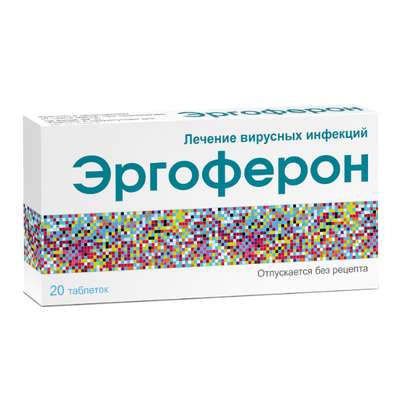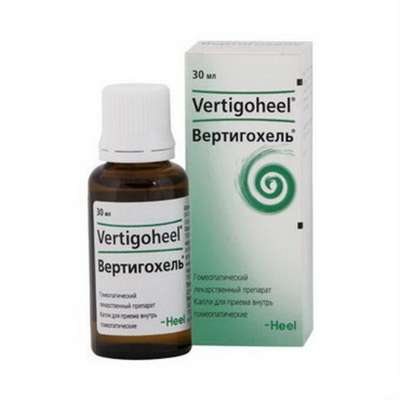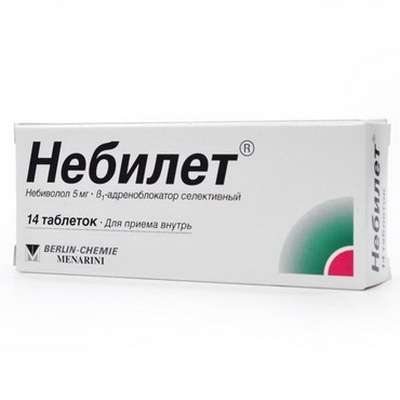Instruction for use: Pentaglobin
I want this, give me price
Dosage form: Solution for infusion
Active substance: Immunoglobulinum humanum normale
ATX
J06BA02 Normal human immunoglobulin for intravenous administration
Pharmacological groups:
Immunoglobulins
The nosological classification (ICD-10)
A49 Bacterial infection of unspecified site: Bacterial infection; Infectious diseases
A49.9 Bacterial infection, unspecified: Chronic bacterial infection; Chronic bacterial infections; Anaerobic bacterial infection; Bacterial superinfection; Acute bacterial infection; Bacterial infections of severe course; Intrahospital infections; Gram-negative aerobic pathogen; Secondary bacterial infections; Infections in Patients with Weakened Immunity; Infections in surgery; Postinfectious glomerulonephritis
D80 Immunodeficiencies with predominant antibody deficiency: Disease of cold antibodies; Agammaglobulinemia acquired; Agammaglobulinemia linked to the X chromosome; Agammaglobulinemia swiss; Secondary hypogammaglobulinemia; Hypogammaglobulinemia; Severe secondary hypogammaglobulinemia; Secondary antibody deficiency syndrome
D84.9 Unspecified Immunodeficiency: Pneumonia in immunodeficient states; Autoimmune disease; Autoimmune diseases; Severe immunodeficiency; immune deficiency; Immunodeficiency; immunodeficiency diseases; Immunodeficiency states due to surgery; Immunotherapy for cancer; Immunomodulation; Infections in patients with weakened immune systems; Correction of immune deficiency; Correction of immunodeficiencies; Correction of a weakened immune system; Correction of a weakened immunity in immunodeficient states; Violation of immunity; Violation of the immune status; Immune System Disorders; Primary immunodeficiency; Maintaining immunity; Lowering the body's defenses; Lowering the immunity; Lowering the immunity of colds and infectious diseases; The decrease of the immune status; Lowered resistance to infections; Lowered resistance to infections and colds; Lowered resistance; Immunosuppression; Predisposition to colds; acquired immune deficiencies; Radiation immunodeficiency; The development of immunodeficiency; Immune dysfunction syndrome; immunodeficiency syndrome; primary immunodeficiency syndrome; Reducing the body's defenses; Immunosuppression; Reduced immune defense; Reducing local immunity; Reducing the total body resistance; The decrease in cell-mediated immunity; Reduced resistance to infections in children; Reducing the body's resistance; Reduced resistance; reduced immunity; Status immunodeficiency; Stimulation of the processes of nonspecific immunity; Heavy selective secondary immunodeficiency; immunity Oppression; Primary immunodeficiency
Composition
Solution for infusion 1 ml
Active substances: Human plasma proteins 50 mg
Of which: immunoglobulin (Ig) ≥95%
(Including IgM - 6 mg, IgA - 6 mg and IgG - 38 mg)
Distribution of subclasses of IgG:
IgG1 - 63%; IgG2 - 26%; IgG3 - 4%; IgG4 - 7%
Auxiliary substances: dextrose monohydrate - 27.5 mg; Sodium ions - 78 μmol; Chlorine ions - 78 μmol; Water for injection (up to 1 ml)
Description of dosage form
Colorless or light yellow, transparent or slightly opalescent liquid.
Pharmachologic effect
Mode action - immunomodulating.
Pharmacodynamics
Pentaglobin contains IgG and elevated concentrations of IgA and IgM with a broad spectrum of antibodies against the causative agents of various infections and their toxins. Pentaglobin produces more than 1000 donors from the pool of plasma, and therefore it contains a spectrum of antibodies characteristic of a normal population. Because of the increased IgA content, and in particular IgM, Pentaglobin has a higher titer of agglutinating antibodies against bacterial antigens than normal IgG preparations. Appropriate doses of Pentaglobin allow the pathologically low Ig concentration to be brought to a normal level. The mechanism of action for other indications, except for replacement therapy in patients with immunodeficiency, is immunomodulating, although not completely clear.
Pharmacokinetics
Bioavailability of Ig at intravenous introduction makes 100%.
It is distributed between plasma and extravascular fluid quickly enough, and in 3-5 days an equilibrium state is achieved in the intravascular and extravascular spaces.
T1 / 2 contained in Pentaglobin Ig is comparable to that for Ig that is present in the body. The magnitude of it can vary in different patients, especially in the case of primary immunodeficiencies.
Ig and Ig complexes are utilized by the cells of the reticuloendothelial system.
Indications for the preparation Pentaglobin
Therapy of bacterial infections with the simultaneous use of antibiotics;
Substitution treatment in patients with immunodeficiency or severe secondary antibody deficiency syndrome (patients with immune deficiency or suppressed immune defense).
Contraindications
Hypersensitivity to any component of the drug;
Increased sensitivity to human Ig, especially in rare cases of a deficiency in the blood of IgA and the presence of antibodies against IgA.
Application in pregnancy and breastfeeding
The absence of risk of using this drug during pregnancy has not been studied in controlled clinical trials, therefore it should be used with caution in pregnancy and lactation, although the long experience of medical use of Ig does not allow expecting any harmful effect on the course of pregnancy, as well as on the fetus and the newborn. Ig injections are excreted with human milk and may facilitate the transfer of protective antibodies to newborns.
Side effects
Chills, headache, fever, nausea, vomiting, allergic reactions, arthralgia and mild back pain are possible. In rare cases - a sudden drop in blood pressure and in isolated cases - anaphylactic shock (even if the patient did not show increased sensitivity in the previous administration of the drug). In connection with the introduction of immunoglobulins, there have been cases of the appearance of signs of aseptic meningitis and, in rare cases, hemolytic anemia / hemolysis, as well as a transient skin reaction (rash or hyperemia) that completely disappeared after discontinuation of therapy. An increase in serum creatinine and / or acute renal failure was also observed.
In isolated cases, signs of thrombosis in elderly patients, patients with signs of cerebral or cardiac ischemia (impaired blood supply to the brain or heart), as well as patients with excessive weight or severe hypovolemia.
In case of appearance of intolerance reactions, it is necessary either to reduce the rate of administration of the drug, or to suspend its injection until the symptoms disappear. The choice of appropriate interventions depends on the type and severity of the side effect. In the event of a negative effect on kidney function, immunoglobulin therapy should be discontinued.
In case of development of shock, it is necessary to follow modern recommendations for carrying out anti-shock therapy.
When using drugs from human blood or plasma, due to the transmission of infectious agents, infection by the latter cannot be completely ruled out. This concerns pathogens that are still unknown in nature. To reduce the risk of transmission of pathogens, donor criteria are selected according to strict criteria, donor plasma is tested and selected and the pool of plasma is monitored. Stages for the removal and / or inactivation of pathogens are included in the manufacturing process (see "Additional Information").
Interaction
Simultaneous use of calcium gluconate in infants can cause undesirable effects.
Live viral vaccines: Ig administration can adversely affect 6 weeks to 3 months on the effectiveness of live vaccines against such viral diseases as measles, rubella, mumps and chicken pox. Vaccination with an appropriate live vaccine should be carried out no earlier than 3 months after the administration of Pentaglobin. In the case of measles vaccination, this effect of Ig can last up to 1 year. Before the expiration of this period, the measles vaccine should be given after determining whether the patient has the appropriate antibodies.
Laboratory tests: after Ig administration, a temporary increase in the titer of various passively introduced antibodies is possible, which can lead to false positive analysis results in a serological study.
Passively introduced antibodies against erythrocyte antigens (eg A, B, D) can affect serological parameters such as alloantibodies to erythrocytes (eg Coombs reaction), the number of reticulocytes and haptoglobin.
Dosing and Administration
IV in the following rate: newborns and infants - 1.7 ml / kg body weight / hour (using perfusor); Children and adults - 0.4 ml / kg body weight / hour; Adults: the first 100 ml - 0.4 ml / kg body weight / hour, then continuously - 0.2 ml / kg body weight / hour to reach 15 ml / kg body weight for 72 hours.
Before administration, Pentaglobin should be visually inspected for the absence of suspended particles and compliance with physical properties. An opaque or precipitating solution should not be used. Light opalescence is a property of Pentaglobin. Beforehand (before opening), the ampoule should be heated to room temperature or body temperature.
Dosage depends on the patient's immune status and the severity of the disease.
For newborns and infants
Therapy of severe bacterial infections, substitution therapy in children with immunodeficiency and secondary antibody deficiency syndrome: daily 5 ml / kg body weight for three consecutive days. The need for a second course depends on the clinical course of the disease.
For children and adults
Therapy of severe bacterial infections: daily 5 ml / kg body weight for 3 consecutive days. The need for a second course depends on the clinical course of the disease.
Substitution therapy in patients with immunodeficiency and secondary antibody deficiency syndrome: 3-5 ml / kg body weight. If necessary, repeat the course after a one-week break.
The contents of opened ampules or vials should be immediately used. Because of the risk of bacterial contamination, the unused solution should be discarded. Pentaglobin can only be mixed with 0.9% sodium chloride solution for injection. Other preparations cannot be added to the solution of Pentaglobin. A change in the electrolyte concentration or the pH value can cause denaturation or precipitation of the protein.
Table
Examples of Pentaglobin treatment regimens for patients of different age groups
| Patients | Body weight, kg | The total dose in the first day, ml | Rate of administration, ml / hour | Duration of administration, hours |
| Newborn | 3 | 15 | 5 | 3 |
| Child | 20 | 100 | 8 | 12,5 |
| Adult | 70 | 350 | 28* | 12,5* |
* Alternatively: first 28 ml / hour 3.5 hours, then 14 ml / hour 68 hours.
Overdose
Overdose of the drug in patients belonging to the risk group, especially people of old age, as well as in patients with impaired renal function can lead to hypervolemia (increased BCC) and increased blood viscosity.
Precautionary measures
Certain severe side effects may depend on the rate of administration, so the rate of administration recommended in the section "Method of administration and dose" should be strictly observed.
Certain side effects can occur more often:
- at a high rate of administration,
- in patients with hypoagammaglobulinemia or agammaglobulinemia in the presence or absence of IgA deficiency;
- in patients receiving human Ig for the first time or in rare cases when switching to another Ig preparation, or if treatment with immunoglobulins was carried out for a long time.
Hypersensitivity reactions in their true form occur in extremely rare cases, in which there is no IgA in the blood and there are antibodies to IgA.
Sometimes, as a result of Ig administration, it is possible to lower blood pressure and, in isolated cases, anaphylactic shock (even if the patient did not show hypersensitivity during the previous administration of the drug).
In most cases, possible complications can be avoided if:
- make sure that the patient does not show allergic reactions to human Ig, first injecting human Ig very slowly (0.4 ml / kg / h);
- carefully observe during the introduction of the drug for the patient and monitor the appearance of signs of undesirable effects. Especially with a view to monitoring the possible appearance of symptoms of side effects, it should be observed throughout the infusion and at least 1 hour after its completion for patients who have never received human Ig before or who have received other Igs to date, or if Ig were administered long ago . All other patients should be monitored for at least 20 minutes after the administration.
Patients with Ig administration very rarely have cases of acute renal failure. In most cases, this side effect has occurred in patients with additional risk factors: renal dysfunction, diabetes mellitus, reduced BCC, overweight, taking drugs that have a nephrotoxic effect, and age over 65 years.
When prescribing the drug and performing Ig treatment for all groups of patients it is necessary:
- sufficient fluid intake before the infusion of Ig;
- monitoring the amount of urine;
- control of serum creatinine content (indicator of kidney function);
- Exclusion of simultaneous intake of diuretics.
In the event of a negative effect on kidney function, consideration should be given to stopping Ig administration.
The most frequent violation of kidney function and acute renal failure is associated with the use of drugs containing sucrose as a stabilizer. Therefore, patients with any risk factor are advised to use Ig that do not contain sucrose. In addition, Ig preparations should be administered, not exceeding the allowable speed (0.4 ml / kg / h).
Influence on the ability to drive a car or perform work that requires an increased speed of physical and mental reactions. There is no indication that immunoglobulins can affect the ability to drive or serve machinery.
Additional Information
For the production of Pentaglobin, only the plasma of healthy donors is used, in which no antibodies to HIV of type 1 and 2 have been detected, the hepatitis C virus and the hepatitis B surface antigen, as well as the activity of liver enzymes (transaminases) do not exceed the limits of normal values. In addition to testing the plasma of individual donors, first miniipules are subjected to control (PCR testing for HIV, hepatitis A, B and C viruses, parvovirus 19), and then a plasma production pool processed for Pentaglobin (HIV antibody re-testing Type 1 and 2, hepatitis B and C, as well as PCR for HIV, hepatitis B and C viruses). In production, a pool of plasma is used only with negative test results.
Pentaglobin is made by fractionating ethanol in the cold. In addition, the manufacturing process includes the steps of removing and inactivating viruses (precipitation with octanoic acid, treatment with β-propiolactone and filtration).
Release form
For 10, 20, 50 and 100 ml of the preparation in bottles of colorless glass, sealed with a stopper of rubber with an aluminum cap.
On 1 fl. In a cardboard box with instructions for use.
Manufacturer
BIOTEST PHARMA GmbH. Landsteiner Straße, 5. D-63303 Dreieich, Germany.
Conditions of supply of pharmacies
On prescription.
Storage conditions of the drug Pentaglobin
In the dark place at a temperature of 2-8 ° C (do not freeze).
Keep out of the reach of children.
Shelf life of the drug Pentaglobin
2 years.
Do not use after the expiry date printed on the package.

 Cart
Cart





